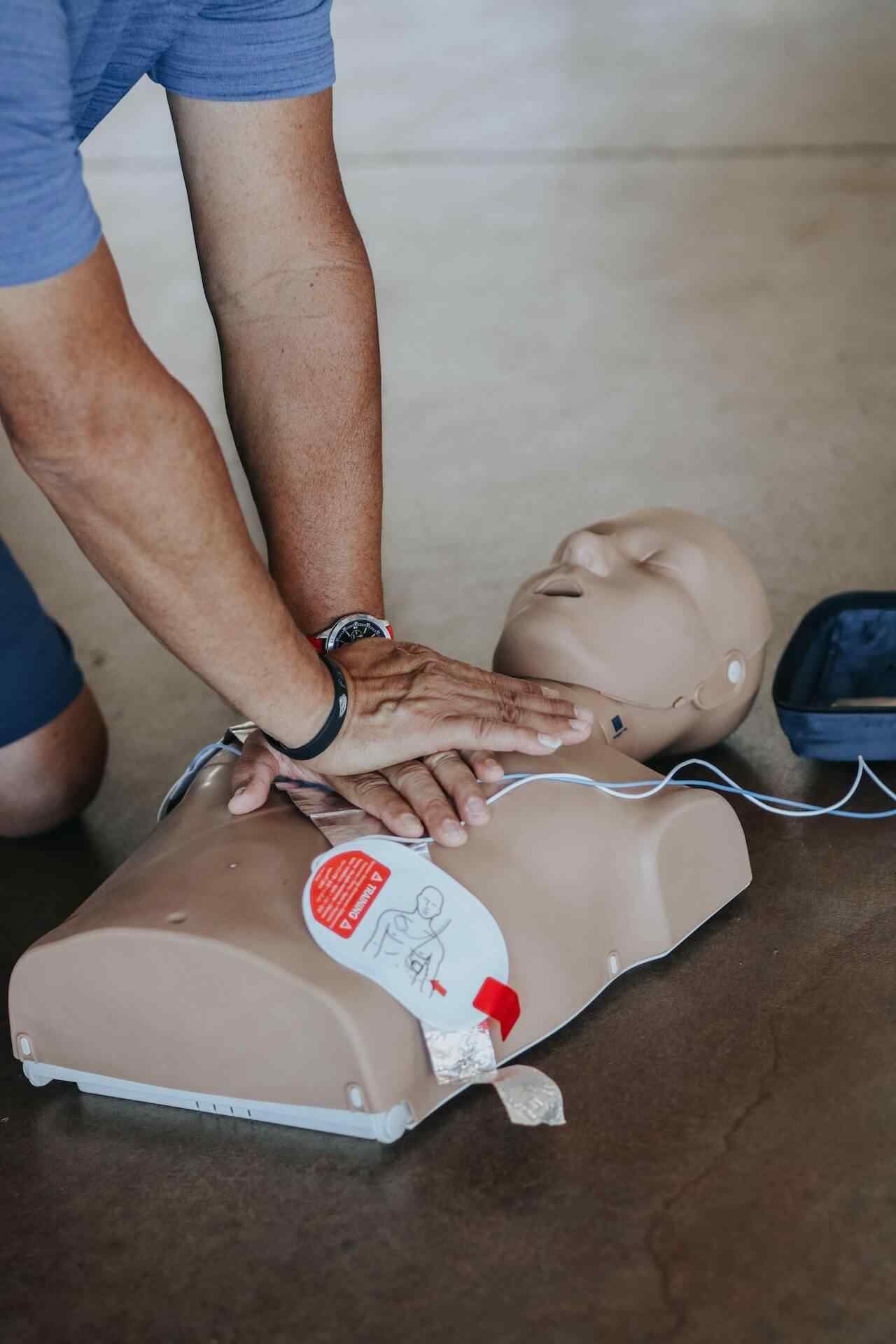Cardiopulmonary resuscitation (CPR) training manikins can make all the difference. Especially, when it comes to imparting the best kind of CPR training. It will be nearly impossible for students to learn the proper CPR method without the right training. They also need to know how to react in an emergency and ultimately save lives. Instructors use the CPR manikins to teach CPR effectively. By demonstrating hand postures and pressure techniques, students get a better idea. A manikin is the greatest simulation tool for instructing interns in various CPR techniques. Each student will learn the fundamentals of CPR effectively by using lifelike dummies.
Use of training manikins
At American HealthCare Academy, our blended CPR learning programs are taught using best CPR training manikins to make teaching more effective. The use of blended learning is effective and practical. This hybrid training complies with all current ECC/ILCOR and AHA national standards. It is also recognized by many businesses as a valid route to certification. You can virtually pass the practical skills test after finishing our online course and receive feedback from a live instructor. This program offers the ideal blend of learning and instruction in adult, child, and infant CPR training.
When you enroll for a blended CPR training course with us, our very own low-cost manikin, the Custom Handcrafted Artificial Manikin for Practice (C.H.A.M.P.) will give you the best hands-on instruction possible. You can add a C.H.A.M.P session to your basket after completing our basic adult, child, and infant CPR training or Healthcare Provider CPR training. You will be asked to choose the best date and time for your training session after adding the skills evaluation to your cart. We will be choosing the best model for your CPR training course. Before the practice day, you will receive a C.H.A.M.P. in the mail and we will send you an email with information about your session. You will take part in a web conference taught by a trained CPR teacher during your session.
Different types of training manikins
CPR teaching uses a variety of CPR manikin models. The following manikins are the most often used:
- Half Body Training Manikins
- Advanced CPR Training Manikins
- Advanced Training Manikins – Child and Infant
- Fully Functional Neonatal (Newborn Child) CPR Training
- Nursing Manikin
These various models help students in learning the right techniques that must be used with people of all ages in a variety of settings. For instance, the half-body model teaches:
- how to perform mouth-to-mouth breathing
- the airway open technique for external cardiac compression
Through this, users could gauge the extent of chest escalation. Through repeated practice, they can perfect the technique. They will learn to compress the chest with the right amount of air.
CPR training manikins are designed specifically for artificial respiration and cardiac (chest) compression. It includes adult, child, and newborn sizes. It is appropriate for healthcare professionals working in pediatric wards to use the neonatal and nursing variation for several tasks. Students can learn how to change diapers and baby clothes, apply bandages, care for the mouth, and administer both hot and cold therapies.
Manikins for Basic & Advanced Life Support
Basic Life Support is the term used to describe the quick action taken by emergency medical services. Manikins are also used in BLS and ACLS blended training courses. These are used to describe the quick action taken by emergency medical services like:
- Administering first aid
- Medications
- Oxygen
- IVs
- Transporting patients to hospitals
Patients who don’t need cardiac monitoring and support are typically administered BLS. EMS personnel help the following patients:
- patients with lower body extremity fractures
- those with mental health issues
- those who need to go to nursing homes or sub-acute care clinics.
Advanced Cardiac Life Support (ACLS) training includes several lifesaving skills. The procedures involved go beyond the basic protocol. ACLS covers circulation, providing open airways and adequate breathing. In this scenario, the following category of patients need a higher level of care while in transport by an ambulance:
- Patients scheduled for surgery need continuous IV dosages.
- Patients for cardiac monitoring.
- Patients coming from emergency care hospitals.
- High-risk obstetric patients (pregnancy, childbirth, and postpartum or afterbirth period).
- Patients suffering from serious complications.
Conclusion
Unquestionably, manikin simulation is an essential tool for instruction and learning. The blended CPR course training at American HealthCare Academy begins with simulation. A manikin is a medium for learning proper techniques. You will receive a blended learning certification card in the mail after completing the skills exam. This class is excellent if it’s your first time earning a CPR certification. If you have any queries, you can call 1-888-277-7865 to learn more. Register for your CPR blended training today!






